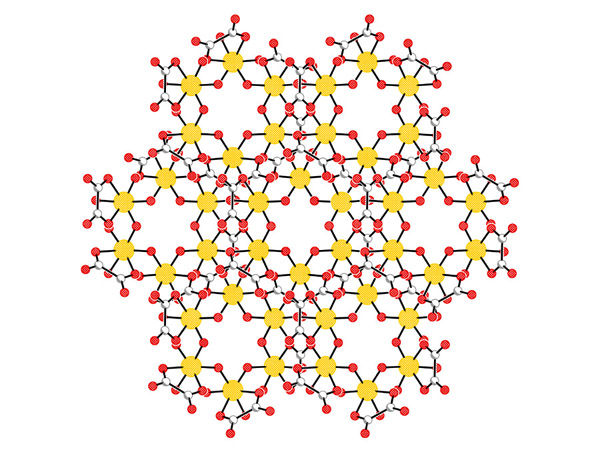00085
Group 13 Tartrate and Oxalate Hydroxides
Chemistry, HKUST
○Herman H-Y. Sung Alex S-F Au-Yeung Pokka P-K Pang Ian D Williams
Hydrothermal synthesis of the chiral porous lanthanide tartrates [Ln2(L-TAR)3(H2O)2]3H2O [1] prompted us to look at the chemistry of the group 13 analogues. Hydrothermal reaction of indium hydroxide or acetate with L-tartaric acid or racemic D/L-tartaric acid at 160oC for 2days affords respectively 1 [In(L-TAR)H2O]0.5H2O which contains tartrate trianions and has a 2D structure and 2 [In(OH)(D/L-TAR)], with a microporous 3D framework that undergoes phase transformation at ca. 150oC. [2] Starting from indium nitrate and L-tartaric acid under similar conditions afford the novel microporous phase [In(OH)(C2O4)(H2O)] 3. This has an open 3D structure with microchannels along the hexagonal c-axis. The gallium analog is related and also non-centric P61 but has an anhydrous framework [Ga(C2O4)(OH)] 4. (see fig) The properties of these phases and their preparation directly from oxalic acid are under investigation.
1. S. Thushari, J.A-K. Cha, H. H-Y. Sung, S. S-Y. Chui, I. D. Williams, Chem. Commun., 2005, 5515.
2. A. S-F. Au-Yeung, J.A-K. Cha, H. H-Y. Sung, S. S-Y. Chui, I. D. Williams, Inorg. Chem. Commun.,
2006, 9, 507. The RGC is thanked for financial support of this work (grant 6084/02P)

